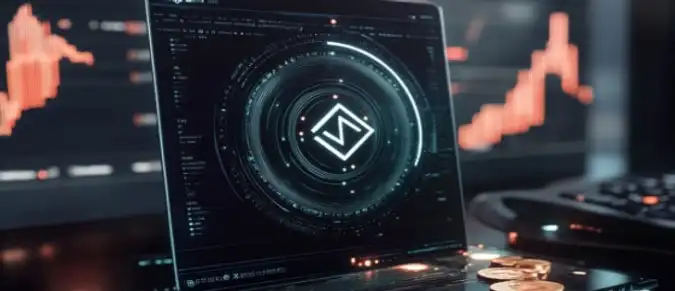Poloniex, launched in 2014, quickly gained popularity among crypto enthusiasts due to its wide selection of altcoins and margin trading functionality. However, since then, the exchange has undergone numerous changes, including ownership shifts, regulatory challenges, and competitive pressures. Despite all this, Poloniex continues to adapt to the evolving market conditions and remains a key player in the cryptocurrency world.
- Poloniex History: From Startup to Key Player
- Key Events and Challenges
- Ownership Changes and the Future of Poloniex
- Current Position and Competitive Environment
- Conclusion

Poloniex History: From Startup to Key Player
Poloniex began its operations in 2014 as a small cryptocurrency startup, offering users not only the ability to trade the most popular cryptocurrencies, such as Bitcoin and Ethereum, but also lesser-known altcoins. At that time, the cryptocurrency market was just beginning to develop, and Poloniex managed to carve out its niche by offering a wide range of digital assets. In 2015, the exchange experienced a serious hacking attack, resulting in the theft of approximately 12% of all Bitcoins on the platform. This incident was the first major test for Poloniex, but the management quickly responded, fully compensating users for their losses, which helped strengthen trust in the exchange.
Despite the initial difficulties, by 2016, Poloniex had become one of the largest cryptocurrency exchanges in the world. This success was due to its ability to offer unique trading pairs and high liquidity, which attracted many traders. In 2017, amid the cryptocurrency boom, Poloniex reached its peak popularity. However, the rapid growth also led to system overloads and various technical issues, which somewhat tarnished the platform's reputation.
Key Events and Challenges
Throughout its history, Poloniex has faced numerous challenges, ranging from hacking attacks to changes in regulatory requirements. Here are some key events:
- 2015: Hacking attack leading to the loss of 12% of all Bitcoins on the platform.
- 2018: Acquisition of the exchange by Circle for $400 million.
- 2019: Sale of Poloniex to a group of anonymous Asian investors.
- 2020: Lawsuits related to wrongful liquidation practices of traders' positions.
In 2018, the acquisition of Poloniex by Circle was a significant milestone in the exchange's history. Circle planned to integrate Poloniex into its ecosystem of financial products and make it part of a global payment network. However, by 2019, Circle decided to sell Poloniex due to regulatory difficulties and high operational costs.
Poloniex also faced criticism for its management practices and security. In 2020, the exchange encountered lawsuits related to wrongful liquidation practices of traders' positions. These events once again drew public attention to issues of regulation and transparency in the operation of cryptocurrency exchanges. As a result, Poloniex was forced to make several changes to its policies and improve communication with users to minimize the negative impact on its reputation.
Ownership Changes and the Future of Poloniex
At the end of 2019, Poloniex was acquired by a group of anonymous Asian investors, opening a new chapter in the exchange's history. After the ownership change, Poloniex once again became independent, gaining the ability to adapt more flexibly to market changes.

This new phase of the exchange's development was marked by the expansion of functionality, improvements to the interface, and the addition of new trading pairs. At the same time, Poloniex continued to face challenges related to compliance with regulatory requirements in various countries, which limited its opportunities for expansion.
Key changes also affected the marketing strategy. Poloniex began to actively promote itself in regions with high demand for cryptocurrencies, including Asia and Africa. These steps allowed the exchange to maintain its position in a competitive market, despite pressure from larger players such as Binance and Coinbase. The table below highlights key events in Poloniex's history:
| Year | Event |
|---|---|
| 2014 | Poloniex Founded |
| 2015 | Hacking incident, loss of 12% of Bitcoins |
| 2018 | Acquired by Circle |
| 2019 | Sale to anonymous investors, separation from Circle |
| 2020 | Lawsuits and changes in management policy |
Current Position and Competitive Environment
At present, Poloniex remains an important player in the cryptocurrency market, but its position has changed significantly from what it was in 2017. The exchange continues to operate actively, offering cryptocurrency trading services, but faces serious competition from giants like Binance, Coinbase, and Kraken. Poloniex's main advantages are its support for a large number of altcoins and low fees, which attract a certain segment of traders. However, the lack of significant innovation and insufficient attention to marketing limit the platform's growth.
The competitive environment for cryptocurrency exchanges has become significantly more complex in recent years. Binance, Coinbase, and Kraken hold leading positions thanks to active investments in new product development, user interface improvements, and global expansion. Poloniex, on the other hand, has focused on strengthening its base in specific regions, such as Asia and Africa, where cryptocurrencies remain popular. However, competition in these regions is also intensifying, requiring Poloniex to continually seek new paths for development.
Conclusion
Poloniex has come a long way from a small startup to one of the key players in the cryptocurrency market. Despite all the difficulties and challenges, the exchange continues to operate, adapting to new conditions and user needs. However, its future largely depends on its ability to respond to the changing competitive environment and meet regulatory requirements. In the coming years, Poloniex will need to find a balance between maintaining its uniqueness and the need for modernization to remain competitive in the global cryptocurrency market.



